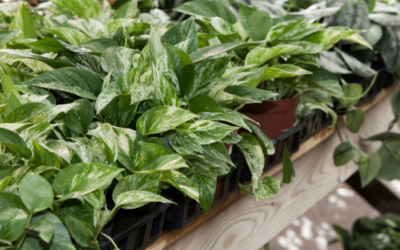Moving your houseplants outdoors in the spring and summer months after they have been cooped up indoors all winter is a great way to give your plants some fresh air, warmth, and humidity. It also can help to mimic the plant’s natural environment, which can boost plant growth. However, taking houseplants from an indoor environment into the outdoor elements can stress plants out due to shock.
Before rushing to move your houseplants outdoors, you will need to gradually acclimate them to their new environment. This will reduce the amount of stress and shock your plant experiences in order to successfully acclimate your plant to an outdoor environment.
Moving Houseplants From Indoors To Outdoors
The main contributor to houseplant stress when moving your plants outdoors is sunlight. The sunlight your plants receive outdoors is much more harsh compared to indoors. To avoid stress that the harsher outdoor sunlight may cause, it is best not to place your plants in direct sunlight when acclimating them. Instead, seek out a well-shaded region and let your plants remain outdoors for a couple hours each day. Some good options for a shaded location can include under a covered porch or tree.
Gradually move your plants to locations that receive a bit more sunlight or dappled sunlight, and slowly increase their time outside, eventually leaving the plants outdoors all day. After a couple weeks, the houseplants will be acclimated enough to the lighting conditions that they can remain outdoors through the summer months.
Caring For Houseplants Outside
Houseplants that have been acclimated to living outdoors have different care requirements than those indoors. During the spring and summer months, when temperatures are warmer, houseplants that are outdoors will need more frequent watering and fertilizing. Even so, be weary of overdoing it with watering and fertilizing, as this can still hurt your plants outdoors. Using a granular fertilizer, such as Osmocote® Plus Smart-Release® Plant Food Outdoor & Indoor, can help to prevent overfertilizing and burning your plant.
Houseplants will also be exposed to more pests outdoors. It is important to check outdoor houseplants for pests often and treat them accordingly, so become familiar with common pests that can inflict houseplants. It is especially important to check for pests before bringing houseplants back indoors for any reason. Some treatment options for pests on houseplants include a systemic granule, such as Bonide® Systemic Houseplant Insect Control, spraying the leaves with an insecticidal soap like Bonide® Insecticidal Soap or Bonide® Insecticidal Super Soap, or neem oil.
Spot some mealybugs on your houseplants? Check out our YouTube video on how to get rid of them!
Weather is another factor to be considered when moving houseplants outdoors. For instance, wind can be a major stressor on houseplants. It can dry plants out quickly or even knock them over if it is strong enough, causing breakage and other damage. Choosing a location for your plants that is covered from harsh winds, such as near a wall, can help prevent this sort of damage. A light rain does wonders for your plants, but a downpour of rain can also cause a lot of damage to outdoor houseplants. Bringing your plants to a safe area during a storm can prevent damages from severe rain storms.
Houseplants are used to consistent temperatures indoors. However, outdoors, where the temperatures can change from one extreme to another, houseplants will need to be brought indoors when temperatures drop below 55° F. This is because most houseplants are native to tropical regions, where temperatures usually do not drop below this. Being exposed to temperatures lower than 55° F can shock your houseplants and damage their foliage. In fall, when temperatures are higher during the day and drop at night, bring your plants inside in the evenings to protect them from the cold nights. This will also help to acclimate them back to your home environment for the winter months.
Ultimately, fresh outdoor conditions do wonders for your houseplants in the spring and summer. As long as you acclimate them to the outdoor environments, your plants will thrive outside. Giving them the proper lighting, care, and shelter are key to acclimating your houseplants to outdoor conditions.
Need more tips, or have other houseplants questions? Our experts at Martin’s Home & Garden are ready to help. Visit our Murfreesboro garden center today!

